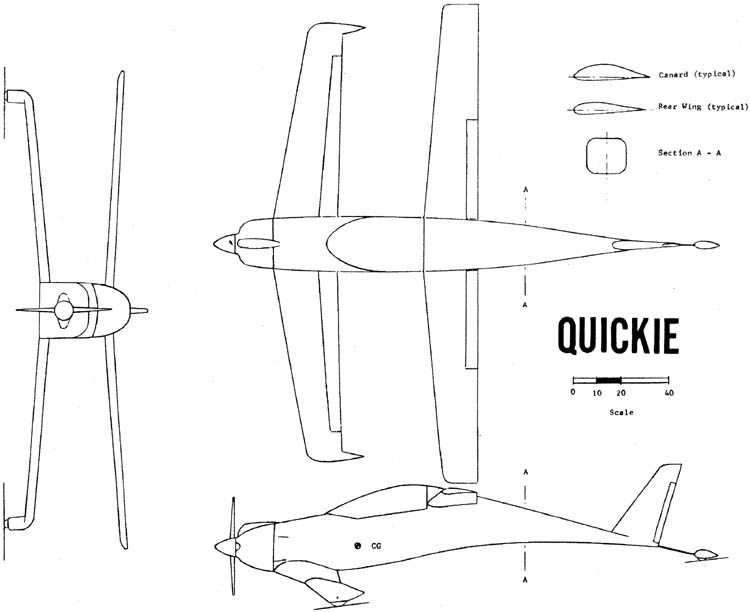Q1 Plans Chapter 1 Page 1-1
- Details
- Category: Quickie Plans
- Published: Monday, 12 May 2008 11:00
- Written by Jun Su
- Hits: 11378
GENERAL TABLE OF CONTENTS
Quickie documentation is available in the following documents:
| CONTENTS | DATE OF FIRST PUBLICATION |
| Quickie Construction Plans - includes education on composite materials and construction, and complete plans to build the Quickie airframe, except the engine installation. | 30 June, 1978 |
| Quickie Engine Installation - includes complete instructions on installing the Onan engine in the Quickie. | 1 Aug., 1978 |
| Owner's Manual - Flight and maintenance manual includes normal and emergency procedures, weight & balance, check lists, detailed flying qualities descriptions, operating limitations, performance charts, maiden flight test procedures, pilot checkout procedures, and record keeping requirements. | 1 Aug., 1978 |
| Quickie Newsletter - published quarterly (Jan., April, July, and Oct.); includes plans changes, options, future developments, and dates and locations of seminars and visits. A subscription to this publication is mandatory for all Quickie Builders. | 25 May, 1978 |
| Quickie Information Package - A 20 page, 49 photo publication that provides general information on the Quickie, and includes an 8" x 10" black and white photo. | 10 Jan., 1978 |
QUICKIE CONSTRUCTION PLANS
TABLE OF CONTENTS
| Chapter | Title | No. of Page |
| 1 | Description/Introduction | 4 |
| 2 | Bill of Materials Sources | 1 |
| 3 | Composite Materials Education | 23 |
| 4 | Miscellaneous Parts | 7 |
| 5 | Hot Wiring | 4 |
| 6 | Ailerons and Elevators | 2 |
| 7 | Building the Fuselage | 14 |
| 8 | Vertical Fin and Rudder | 5 |
| 9 | Building the Main wing | 14 |
| 10 | Building the Canard | 13 |
| 11 | Wheel Pants/Wheels/Brakes | 9 |
| 12 | Fuel System | 3 |
| 13 | Mounting the Wing and Canard | 3 |
| 14 | Fuselage Details | 7 |
| 15 | Canopy | 8 |
| 16 | Instruments and Pilot-Static | 1 |
| 17 | Engine Installation | 2* |
| 18 | Electrical System | 1 |
| 19 | Finishing/Painting | 7 |
| Appendix | Large Drawings |
* The remaining pages of the Engine Installation
section are included with the Engine Package.




